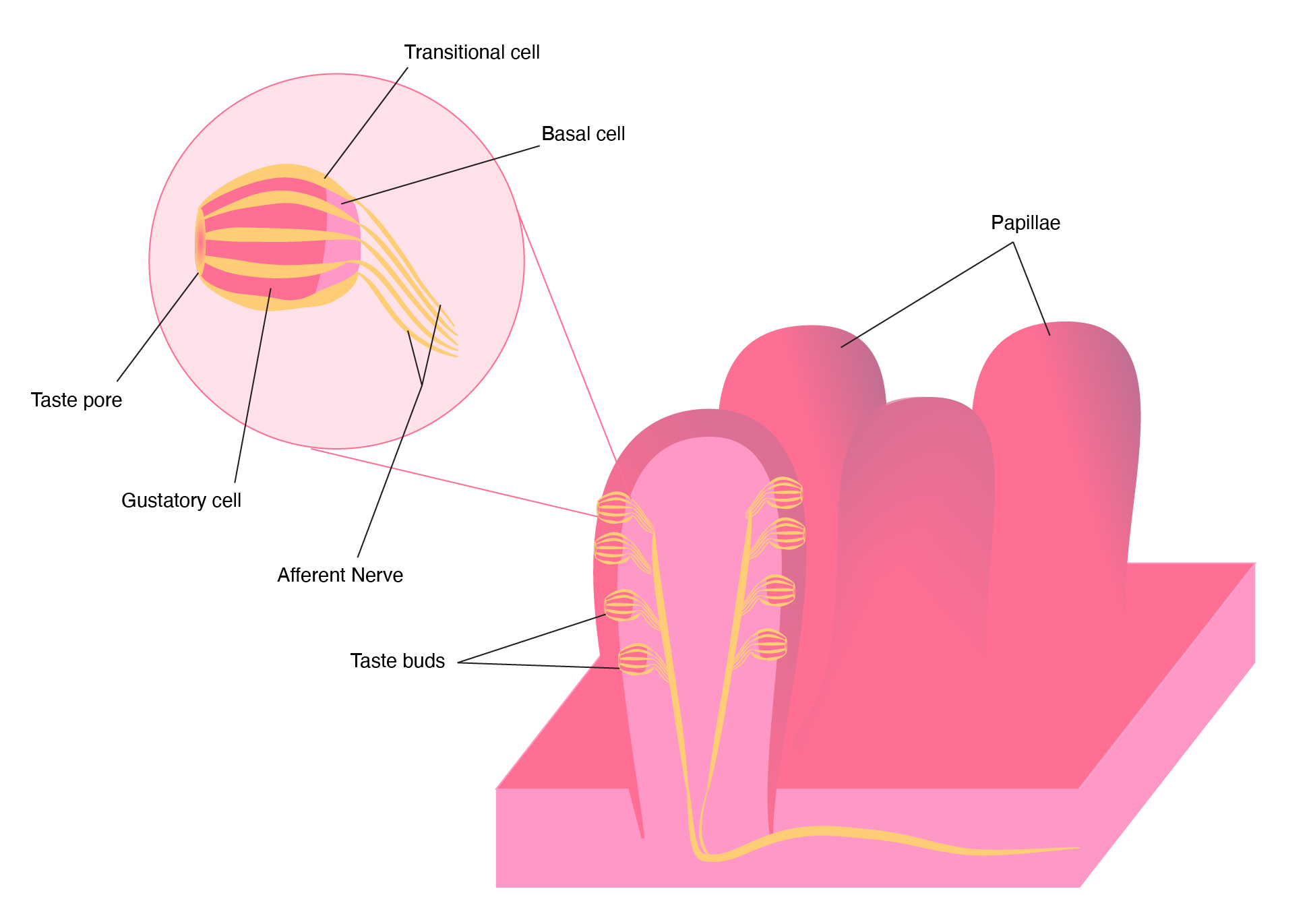
The 5 Senses: Taste
Humans have five basic senses: touch, sight, hearing, smell, and taste. Today, we are going to focus on taste, which is also referred to as gustation.
Understanding how taste works is crucial when formulating a dietary supplement product because it can help not only create flavors but speculate target consumer preferences and anticipate changes in palates. For consumers, taste is often a significant factor in the decision to purchase and, more importantly, to continue using a product.
Generally, we have about 9,000 taste buds on the tongue, soft palate, throat, and esophagus. As children, our taste buds are not fully developed, which is why children tend to desire overly sweet or sour products. As we age, we slowly lose taste buds.
Our tongue naturally has a combination of sodium, potassium, and calcium ions. When we bite into a food substance, the saliva breaks down the food particles and alters the concentration of the sodium, potassium and calcium ions. The interaction of ions stimulates taste receptors within our taste buds. Taste buds cover the surface of the papillae, small bumps on the top and sides of our tongue, soft palate, upper esophagus, cheek, and epiglottis.

The chemical molecules are converted into signals and transmitted through the facial nerve to the thalamus and gustatory cortex of the brain to determine whether the food has a salty, sweet, bitter, spicy, or umami (savory) taste.
 While the different taste receptors can be found all over the tongue, taste receptors are unique and can only detect one type of taste molecule. For instance, what we perceive as salty activates a different taste receptor than the molecules that we perceive as sweet. Proteins in food, such as the red meat of a burger, are interpreted in a special way. Unlike sour, salty or bitter receptors, the sweet taste receptors are the only receptors that can identify the proteins and send signals to the brain. Our brains translate proteins as sweet. This is one of the reasons why the taste of a juicy, marbled steak feels so organoleptically rewarding and addictive.
While the different taste receptors can be found all over the tongue, taste receptors are unique and can only detect one type of taste molecule. For instance, what we perceive as salty activates a different taste receptor than the molecules that we perceive as sweet. Proteins in food, such as the red meat of a burger, are interpreted in a special way. Unlike sour, salty or bitter receptors, the sweet taste receptors are the only receptors that can identify the proteins and send signals to the brain. Our brains translate proteins as sweet. This is one of the reasons why the taste of a juicy, marbled steak feels so organoleptically rewarding and addictive.
Taste research continues to advance as scientists make discoveries, such as taste receptors in the gut and pancreas, and develop substances that suppress certain taste receptors. This could lead to potential treatments for disease, regulating hormone disorders, and control over taste sensations in pharmaceuticals and nutraceuticals.
Wellness Through Innovation
It is our mission to provide a seamless customer experience through innovative collaborations, highest-quality products, and unparalleled service. Get started today with a free quote.
Wellness Through Innovation
It is our mission to provide a seamless customer experience through innovative collaborations, highest-quality products, and unparalleled service. Get started today with a free quote.
Wellness Through Innovation
It is our mission to provide a seamless customer experience through innovative collaborations, highest-quality products, and unparalleled service. Get started today with a free quote.
Let's Stay Connected
Contact
-
+1.661.775.2500
-
28903 Avenue Paine
Valencia, CA 91355 USA -
Main Headquarters Hours
Monday - Friday 8AM to 5PM -
Shipping & Receiving Warehouse Hours
Monday - Friday 8AM to 2:30PM
Disclaimer: The information provided by Lief Labs on our website is for general informational purposes only. The information on the website does not constitute legal or other professional advice. All information on Lief Labs’ website is provided in good faith, however we make no representation or warranty of any kind, express or implied, regarding the accuracy, adequacy, validity, reliability, or completeness of any information on our website and/or the links provided. Lief Labs and its parents, subsidiaries, owners, shareholders, and employees are not liable for any damages arising in contract, tort or otherwise from the use of any information on our website. Because your business has its own unique needs, you should consult with legal counsel experienced in FDA, FTC and regulatory matters.
© Copyright 2024 by Lief Organics. All Rights Reserved.


